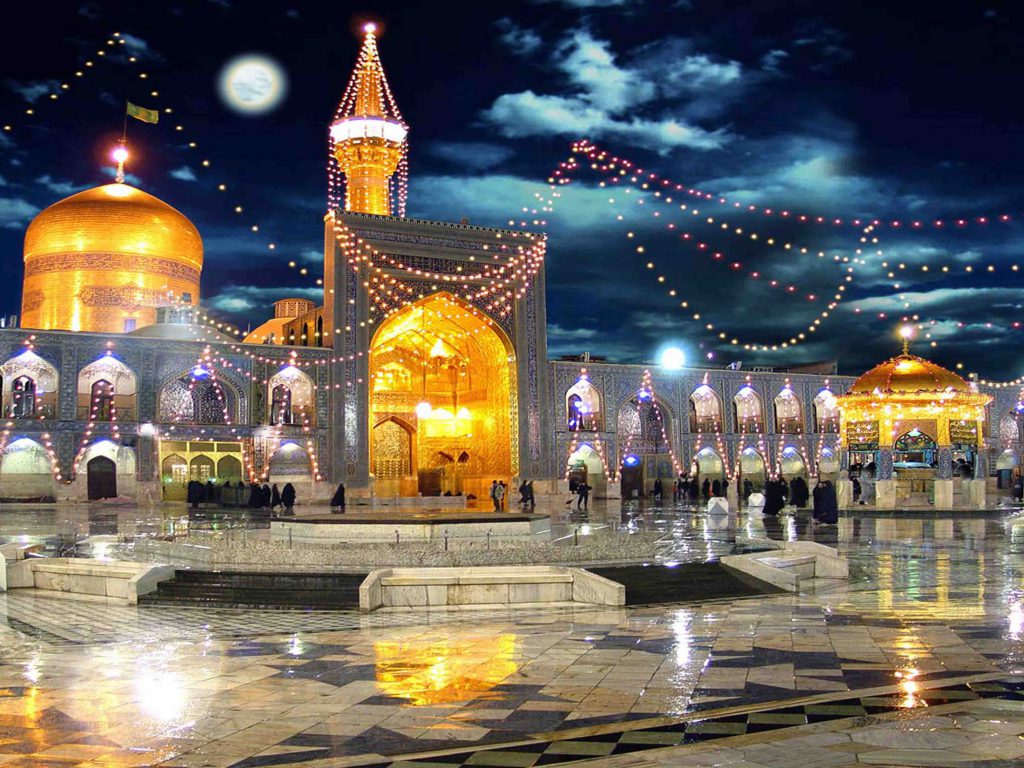
Mashad or Mashhad, itself has grown into a large industrialized city as well. In ancient times, it has been on the Silk Route passing through the northeast of Iran. The location, historical events, and religious reasons have all contributed to the growing importance of the city.
Geography of Mashhad
Mashhad or as it is commonly spelled “Mashhad”, is one of the largest cities of Iran in terms of population. It is situated at an elevation of approximately 980m above sea level and is located between two local mountain ranges of Binalood and Hezar-Masjed. Mashhad features a steppe climate with hot summers and cool winters. Generally, it is dry and hot on summer days and gets relatively cold on winter days.
The average annual temperature is 15°C and the average annual rainfall is 230 mm in Mashhad.
Mashhad is 934 km away from Tehran. As Mashhad is the pilgrimage center of Iran, there are several ways of traveling to this city.
- By car
Traveling from Tehran to Mashhad takes about 9 and a half hours. The shortest route passes through Garmsar, Semnan, Damghan, Shahrood, Meyami, Davarzan, Sabzevar, Neyshabur, and Malekabad cities and reaches Mashhad.
The other route is longer but more spectacular and beautiful. The second route passes through Rudehen, Amol, Sari, Gorgan, Azadshahr, Bojnourd, Quchan, and Chenaran and then reaches Mashhad.
- By airplane
The flight time from Tehran to Mashhad is 3 hours and 5 minutes. Arrived in the city, we can reach Mashhad by airport taxi, bus, or subway anywhere in Mashhad. The opening time of the Mashhad subway is at about 7:00 am.
Mashhad Airport has daily and weekly flights to Zanjan, Chabahar, Birjand, Shiraz, Zahedan, Sharjah, Rasht, Assaluyeh, Orumiyeh, Noushahr, Najaf, Mazar-e Sharif, Muscat, Kuwait, Kermanshah, Kashan, Kerman, Kandahar, Kabul, Ilam, Herat, Hamedan, Qeshm, Gorgan, Dubai, Bushehr, Bandar Abbas, Baghdad, Yazd, Zabol, Abadan, Ahvaz, Kish, Sari, Tabriz, Isfahan, and Tehran.
- By train
Traveling from Tehran to Mashhad by six-bed sleeper, luxury, and four-bed sleeper trains takes about 16 hours. You can take the trains without the compartment to reduce the journey time by up to 8 hours. Tehran to Mashhad trains and vice versa are the busiest train route in Iran.
The train travels through Tehran, Semnan, Shahrood, Neqab and Neyshabur cities and eventually stops in Mashhad.
Mashhad is the birthplace of several Iranian literary figures and artists including Ferdosy, the Iranian poet who saved the Persian language after the Arabs’ invasion. It is believed that Tus, Ferdosy’s birthplace and a small town nearby, has been the origin of the city before it was expanded to the large scale we see these days.
Population and Economy of Mashhad
Mashhad is a large city accommodating 3,615,000 people in it. The economy of Mashhad is mainly based on religious tourism. Therefore, the hotel industry is one of the most thriving and job-creating industries in Mashhad.
On the other hand, agriculture is the main job in the towns and villages near Mashhad. Summer products such as melon, zucchini, and cucumber and garden products such as cherry are among the products of these towns and villages.
Mashhad handicrafts include weaving carpet and kilim, sewing fur clothing, cutting turquoise, cutting stones, cutting Hara Kareh (stone cauldron), and weaving felt. There are several industrial towns in Mashhad including automobile parts and industrial electricity.
History of Mashhad
Beginning as a village in the 9th century, it was known as Sanabad. The Abbasid Caliph, Harun, died and was buried there. Then, Imam Reza was martyred and buried next to him. The burial place of the Imam turned into a shrine to which many began to visit to show their respect. Therefore, by the end of the 9th century, a dome was built on top of the grave, several buildings were constructed and lots of shops were opened around it to serve the pilgrims.
Under Mongols’ invasion in the 13th century, a large number of people whose cities, towns and houses had been demolished, began to migrate to Mashhad. This was because it was almost unharmed. In around one century, the city grew largely and prospered. In the 15th century, when Timurids ruled over this part of Iran, Goharshad, the wife of Shahrokh Khan, decided to build a magnificent mosque next to the shrine. This added to the importance of the sight as well as the city.
When Iran turned into a Shiite branch of Islam during Safavids in the 16th century, Mashhad gained a lot of importance particularly after it was conquered and freed from the hand of Uzbeks by Shah Abbas I. He helped the popularity of the city by promoting pilgrimage to Mashhad, built several madrases and other structures besides the shrine.
In the 18th century, Mashhad was the capital of Nader Shah. Under Qajars and after that the city was the target of local rulers trying to lay their hands on Mashhad to have absolute control over it. In 1912, Russians bombed the sanctuary of Imam Reza and in 1994 a bomb exploded there and killed several people.
Also, Mashhad has played political roles during history led by its religious leaders. The Khorasan province used to be much larger than the present boundaries set for it and stretched over Iran’s neighboring countries. Mashhad had become the largest city in the province. Today it’s the major city of Iran at the northeast of the country.
Historical Attractions inside the City
Here’s the list of Mashhad tourist attractions inside the city:
Imam Reza’s Shrine Compound
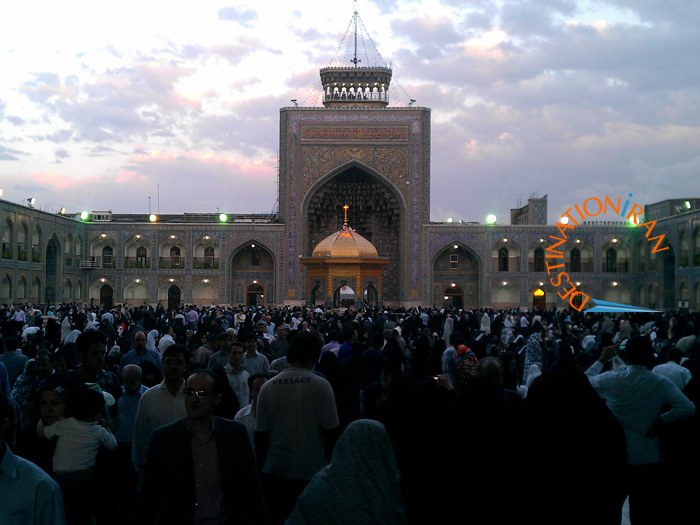
This is the main religious and architectural highlight of Mashhad to visit incorporating several outstanding structures including the fantastic 15th-century architecture of Goharshad Mosque. Imam Reza, the 8th Imam of Twelver Shiites is buried here.
Tomb of Nader Shah
This is a monument inside Naderi Garden Museum. Mr. Houshang Seyhoun, a contemporary Iranian artist, has designed and built an eye-catching sculpture of Nader there. It shows Nader on the horseback with three people following him. There are two museum halls: one showcases some relics from the Afsharid era and the other one displays some images and documents about Nader Shah and Cornel Mohammad Taqi Khan Pesian.
Tavakoli House
The building is located near the holy shrine of Imam Reza. There are beautiful tile and brickwork as the decoration of this building. At the entrance of this building, there are verses of the Koran.
Ardakani House
The building dates back to the late Qajar period. It is an inscribed national heritage of Iran.
Shah-e Lafata Museum
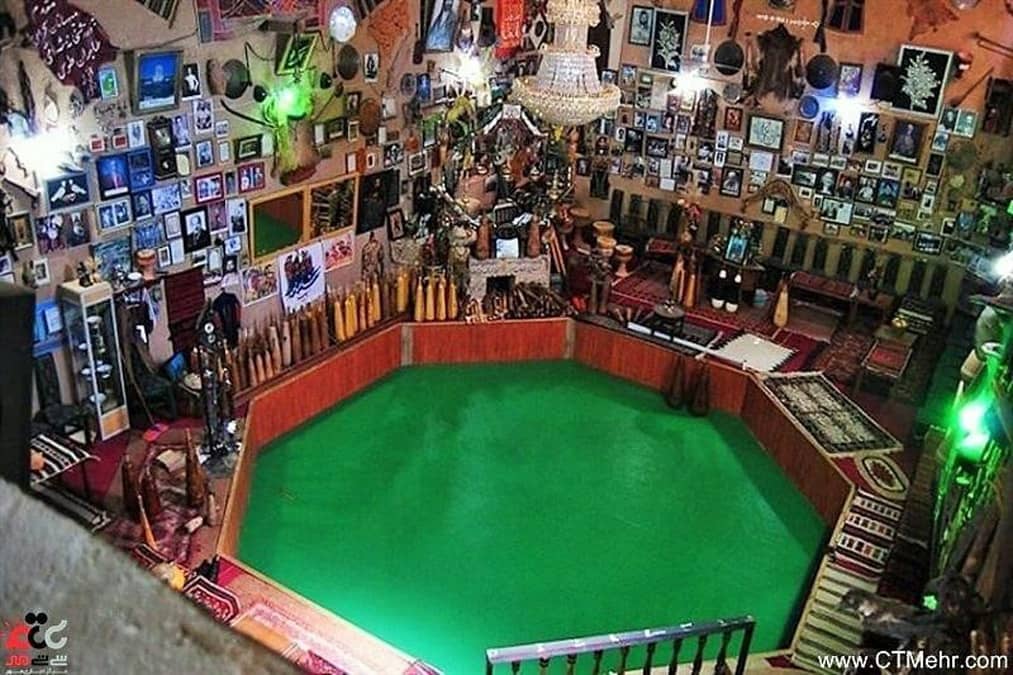
The tourists interested in Ferdowsi and the Shahnameh are the fans of this museum. The museum was formerly a Zurkhaneh and has interesting details.
Daruqeh House
The Russian architects built this house in the late Qajar period. Until the past three decades, this monument was a residential place. However, Iranians restored the house in 1987 and made it public.
Vatanchi House
The building dates back to the late Qajar period. It is an inscribed national heritage of Iran.
Tomb of Pir-e Palandooz
The building is located in the northeast part of the shrine of Imam Reza in Mashhad. The overall shape of the building and the paintings inside it prove that the monument belongs to the Safavid era, constructed in 1578.
Qafuri House
The house belongs to the Qajar period. It is an inscribed national heritage of Iran.
Koozeh Kanani House
The construction of the house dates back to 1868, during the Qajar period. It covers an area of more than 1000 m2. Architects of this house used the brick as the decoration. The house is now a provincial cultural heritage as well as the Constitution Museum.
Khooni Garden
This garden covers an area of 5.6 hectares. The Russian tsarist army fired cannonballs into Goharshad Mosque from this garden. According to the available documents, architects built Khooni Garden in the early Qajar period as a symbol of Iranian gardens in the southern part of the city walls of Mashhad. As there is a spring in this garden, it is also famous for the Spring Garden. There were three separate buildings in this garden, two of which are demolished.
Tomb of Mir Qiaseddin Malekshah
The construction of this building dates back to 1743. There is a valuable tile decoration inside the tomb.
Malek House
This monument belongs to the late Qajar era. The house was much wider in the past, but only the exterior has remained now.
Hamam-e Shah Museum
The bath belongs to the Qajar period. The monument was the bath for the king and his courtiers.
Historical Attractions outside the City
Here’s the list of these historical attractions:
Mausoleum of Ferdowsy
This is resting place of the most famous Iranian poet in Tus who saved the Persian language by composing his book “Shahnameh” in 30 years when it was forbidden to write anything in Persian.
Haruniyeh
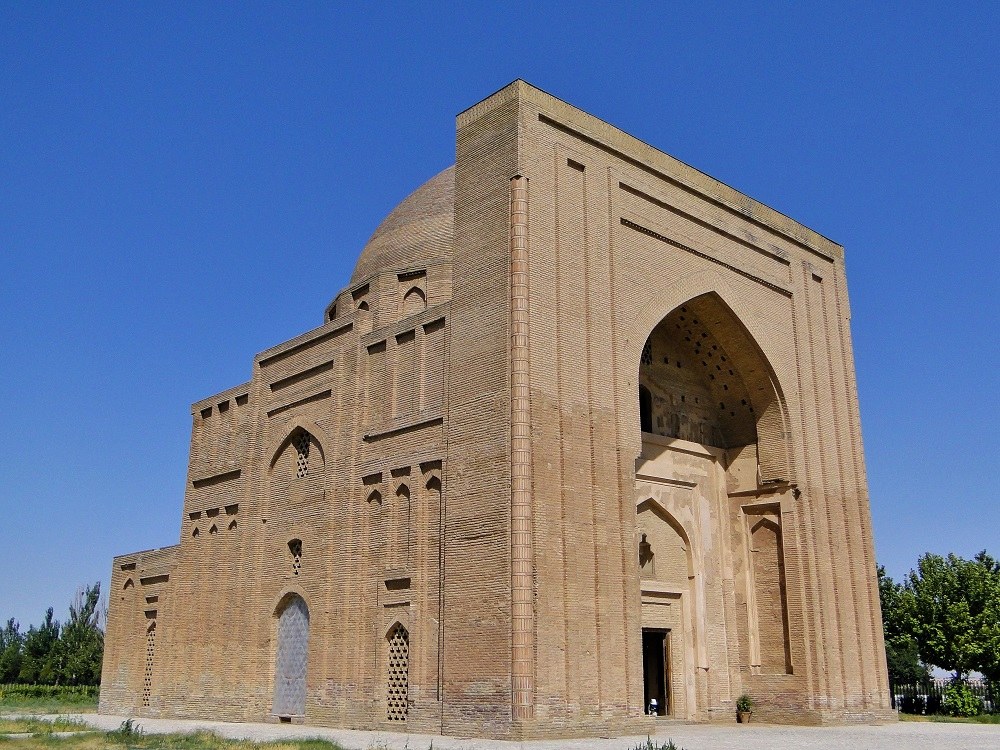
It is the mausoleum the famous Iranian Sufi, Imam Mohammad Ghazali in Tus, which is close to the mausoleum of Ferdosy. The brick structure is huge, worth visiting and representing 14th-century architecture.
Khorshid Palace
It is also known as Kakh-e-Khorshid located at Kalat e Naderi close to Turkmenistan border. The unique architecture of this structure in Iran is worth visiting and even the road to this monument is particularly attractive.
Robat Sharaf
This is one of the oldest caravansaries in Iran built in the 12th century with four-eyvan courtyard and beautiful brick decorations near Afghanistan border. It looks isolated and hidden although it used to be a major one on trade routes.
Mausoleum of Ahmad-e Jami
This is the burial place of a famous 12th century Iranian Sufi and poet in Torbat-e-Jam. Eight different structures have been built at this mausoleum since the 13th century.
Omar Khayam Mausoleum
The tomb of famous Iranian mathematician and poet of the 11th century was built in the 20th century in Neyshaboor. Architecture is geometrically sophisticated and fascinating in a beautiful garden.
Tomb of Farid-ud-Din Attar
This is the burial place of Iranian Sufi, poet, and theoretician of mysticism in the 12th century. The structure is 15th century built under Timurids in Neyshaboor.
Imamzadeh Mahruq
This is the mausoleum of the 10th-century religious figure built in the 16th century located in Neyshaboor.
Tomb of Khajeh Rabie
Around 6km north of Mashhad, this tomb is the burial place of Imam Reza’s disciple decorated with beautiful calligraphy of Reza Abbasy.
Tomb of Khajeh Morad
It is just outside Mashhad on Neyshabur road and is the burial place of one of Imam Reza’s disciple.
Tomb of Khajeh Abasalt
This is also another burial place of a disciple of Imam Reza just outside Mashhad on Neyshabur road.
Golestan Dam
The construction of this dam dates back to the Timurid period. Golestan dam is located 8 kilometers west of Mashhad on Golestan River. The is about 500 years old.
Ferdowsi House
This house is located in Paj Village, 15 km northeast of Mashhad. It has the walls made of sun-dried brick, mud, and plaster. The date of its construction is not clear.
Natural Attractions of Mashhad
Here’s a list of the natural attractions of Mashhad:
Moghan Cave of Mashhad
This cave is located 35 km of Mashhad and south of Moghan Village. The cave has two openings and there are traces of stalagmite and stalactite. The cave has several wells.
Haft Howz Valley
This valley is located 16 kilometers from Mashhad on Khalaj Road. It has a beautiful and intact nature. Haft Howz Valley is a summer quarter.
Koohsangi Region (Koohsangi Park)
This area is 8 km from the city center. Koohsangi Region is a mountainous area with rocky mountains where climbing is very easy.
Mashhad Botanical Garden
This park is located outside the city of Mashhad. However, accessing the subway is possible. Rose, medicinal herbs and fruit gardens are a part of the park attraction.
Vakilabad Garden
It is a jungle garden with a local zoo for recreation.
Qara Su Kalat Waterfall
This waterfall is located about 159 km from Mashhad. It is located in the southwest of Kalat Naderi Village.
Darreh Al Cave
This cave is located in a village of the same name. Al village is intact and is a natural attraction with beautiful trees and streams.
Jaqarq Village
This rural area is 40 km away from Mashhad. It is a summer quarter with an intact nature.
Abardeh Village
The village is famous among tourists for its stir-like architecture.


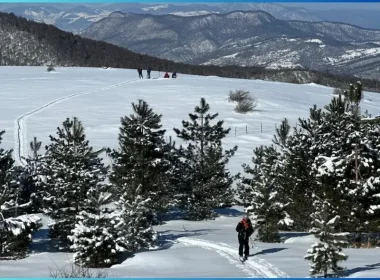


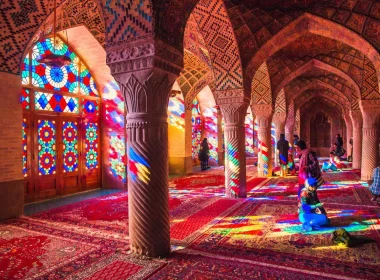
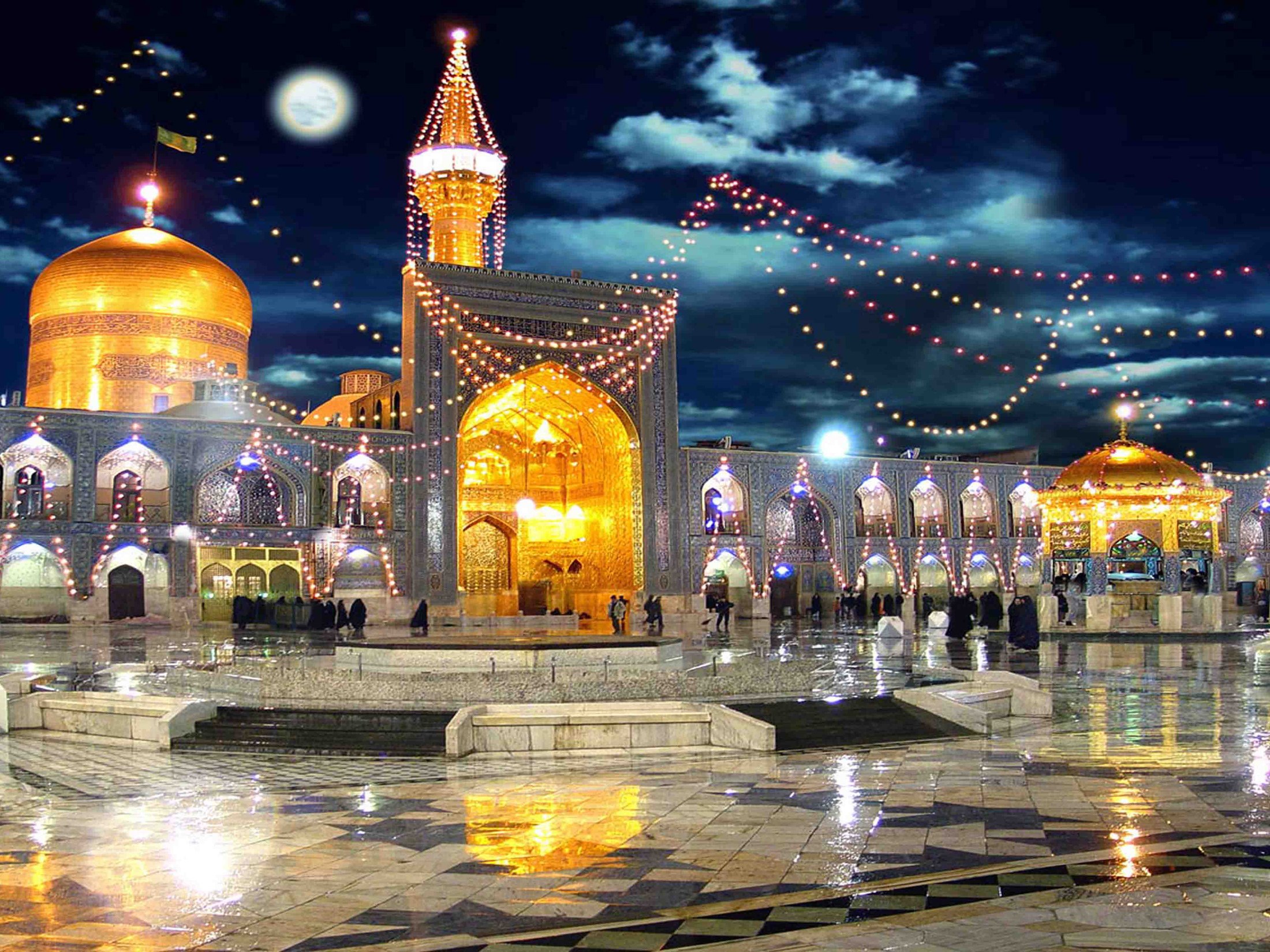
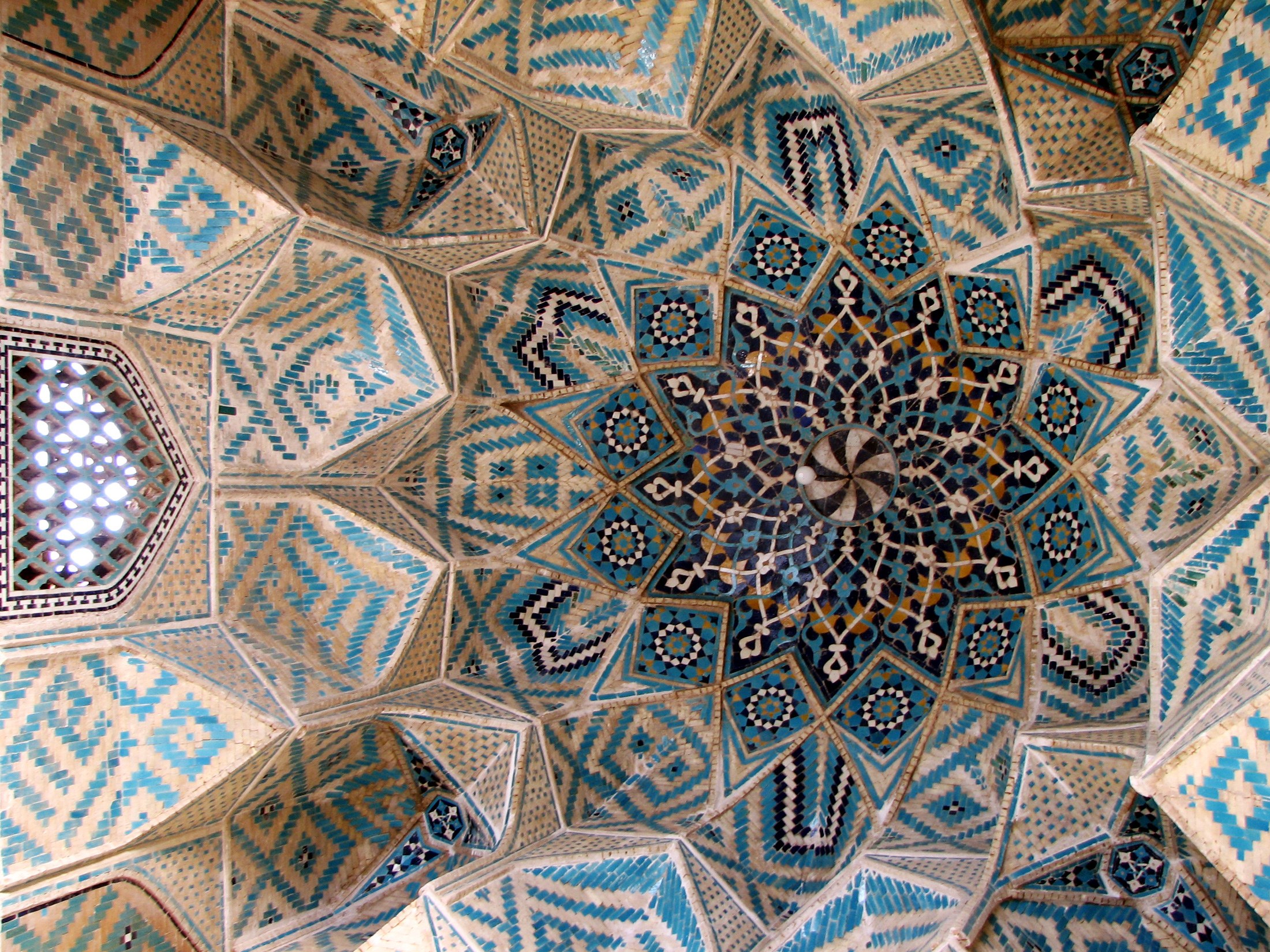
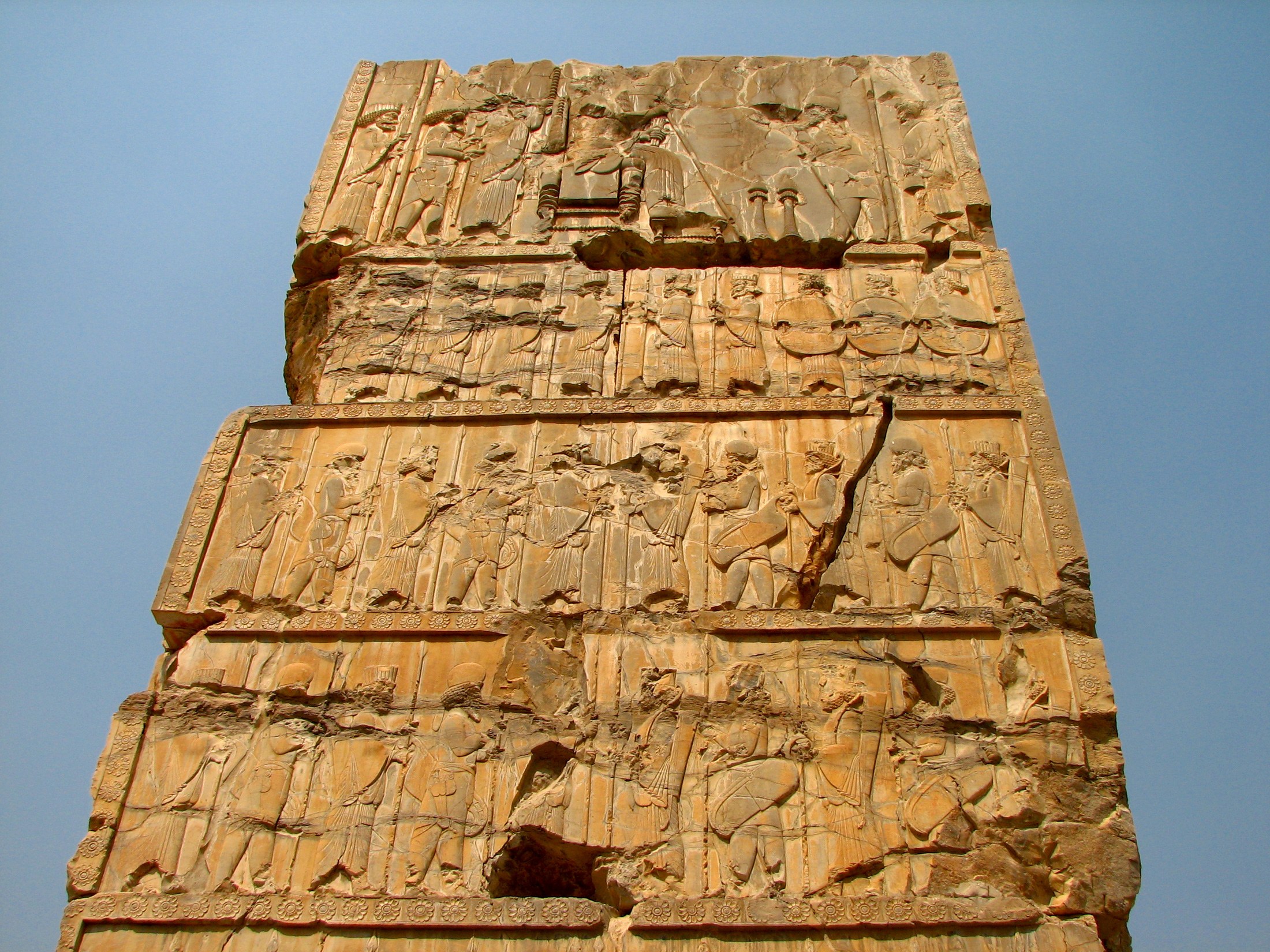
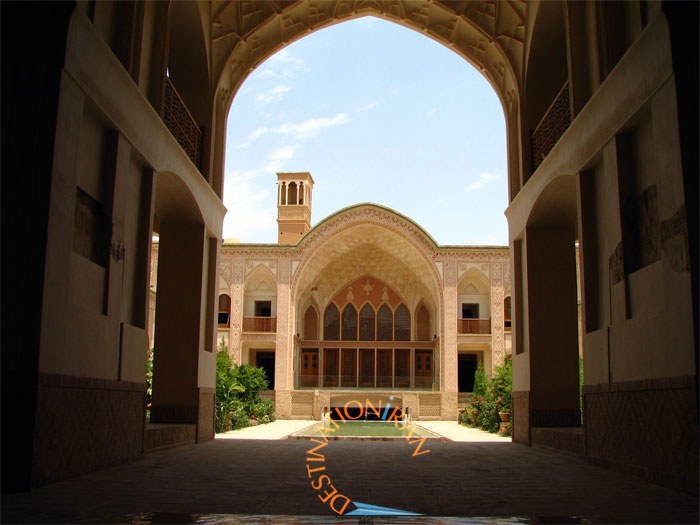
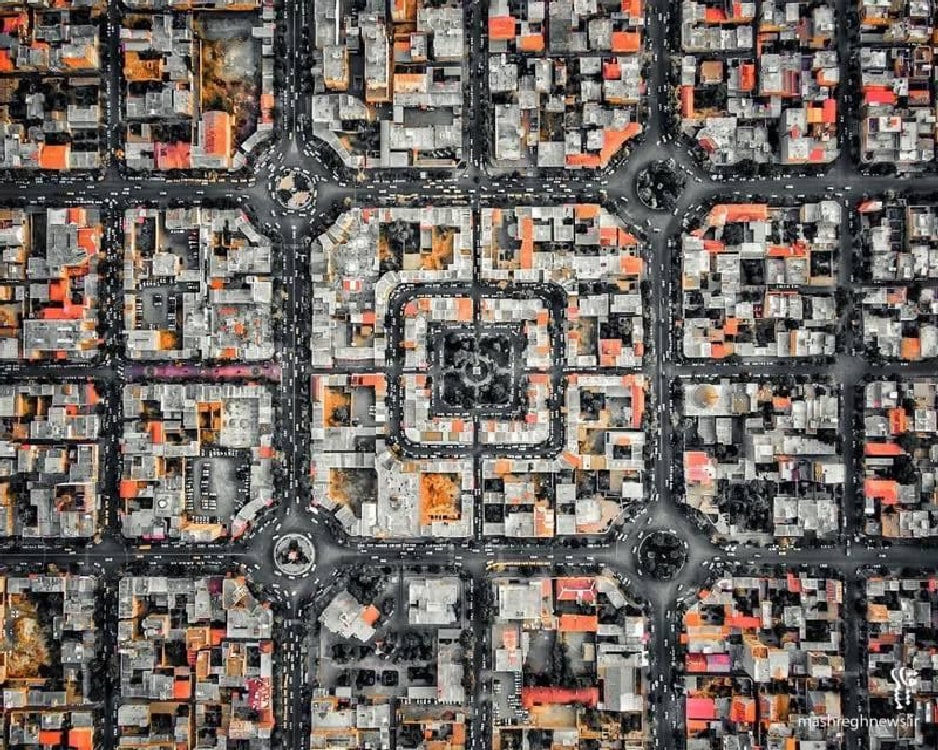
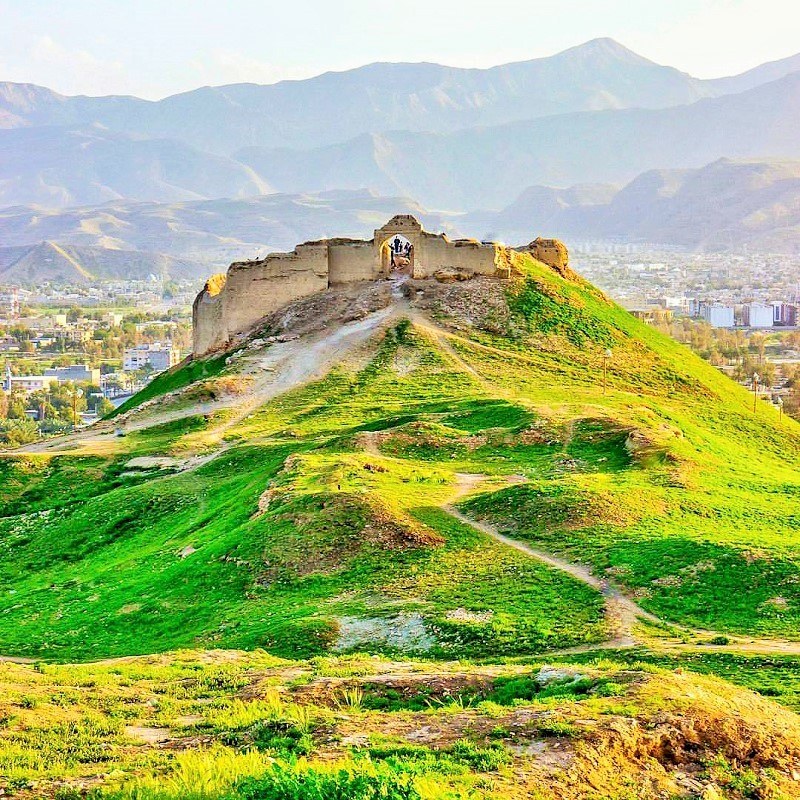
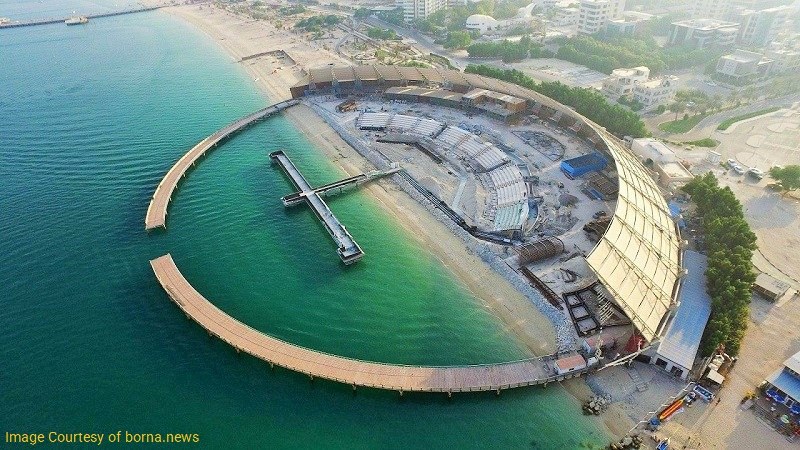
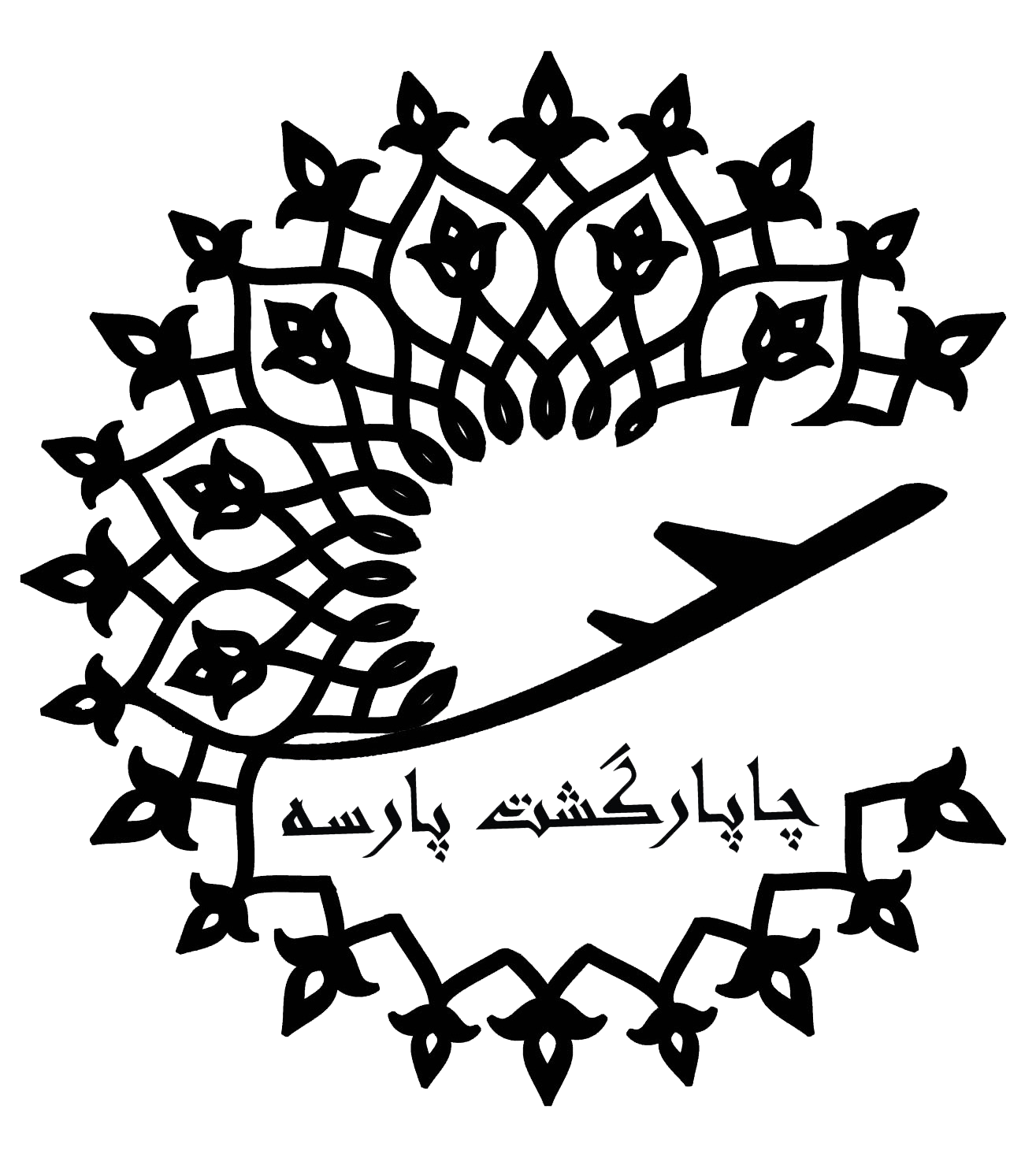

Thanks for introducing me to Mashad!
All the best from Anne!
We’re happy to know that you’ve found Mashad interesting. You’ve traveled to Iran twice and it’s fascinating to see you find other destinations inside Iran inspiring!